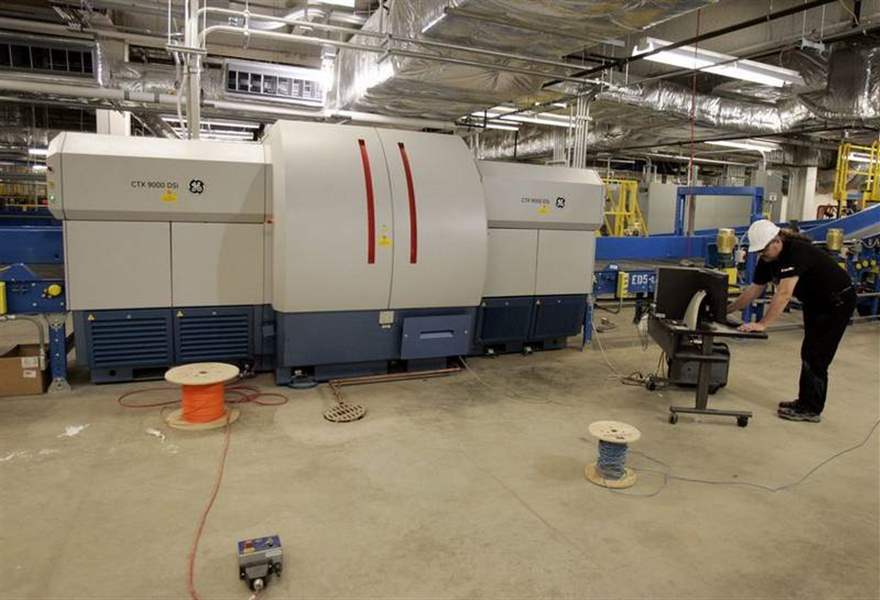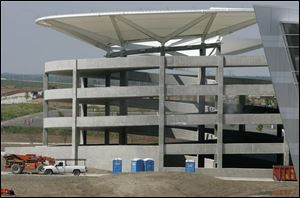
New airports' security powerful, subtle
6/18/2008
A technician tests one of the nine scanners that are part of Indianapolis' $24 million baggage system.

A technician tests one of the nine scanners that are part of Indianapolis' $24 million baggage system.
INDIANAPOLIS - Nine luggage scanners that $1 million each wait beneath the new terminal, poised to check for explosives at a combined rate of 3,600 bags an hour.
Short concrete posts guard the main doors. The front windows are of glass that folds like a drape when broken rather than explodes into shards. All these are features of the $1.1 billion terminal at Indianapolis International Airport, scheduled to open this fall.
New and renovated airports have poured millions of dollars into safety upgrades since the Sept. 11, 2001, terrorist attacks, adopting precautions ranging from the most secure place for parking garages to more efficient security checkpoints.
"We like to say around here that the best kind of security is the security that you can't see," said Ken Capps, vice president of public affairs for the Dallas/Fort Worth International Airport, which opened a new international terminal in 2005.
In Indianapolis, those steps also include a 240-foot-wide strip of lawn between the front entrance of the terminal and the five-story parking garage.

Indianapolis five-story parking garage is being built more than 300 feet from the terminal to conform with federal law.
The grassy median is part of a federal mandate that all buildings that hold cars be at least 300 feet from an airport terminal.
"For the most part, people weren't even thinking about this till after 9/11," said Andy Bell, vice president of planning at the Dallas/Fort Worth airport.
Airports have spread out the cost of these upgrades using bond revenue, rent increases, parking garage fees, and other sources of income such as a higher price for a cup of coffee.
"The passenger ultimately pays for everything," said Dick Marchi, a senior adviser with Airports Council International-North America.
The Indianapolis terminal is one of the first airports designed and built since the 2001 attacks. It will have more than double the current airport's space devoted to security equipment.
It also will have a room for isolating international travelers suspected of carrying a contagious disease.
The airport authority spent $24 million to build the baggage screening system beneath the terminal's main floor.
It includes about a mile of conveyor belts that feed luggage through scanners that compare bag contents with properties found in explosives.
Security personnel will keep watch from a nearby room, and they'll be able to quickly divert any suspect bags.
Dallas/Fort Worth plans a similar baggage screening system for its five terminals.
Airport planners also hope to boost security by making passengers happier about the checkpoint process.
Indianapolis will use natural light to help improve the mood around its two checkpoints, and it plans to install monitors that tell passengers how long the checkpoint process takes.
Dallas/Fort Worth, meanwhile, plans to use video displays and recorded messages to direct passengers in a less confrontational manner.
"If everybody's irritated and cussing," Mr. Bell said, "it's hard to tell who might be a person of interest."